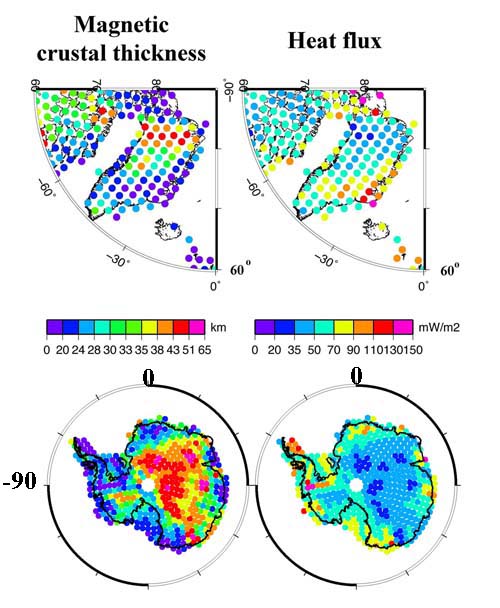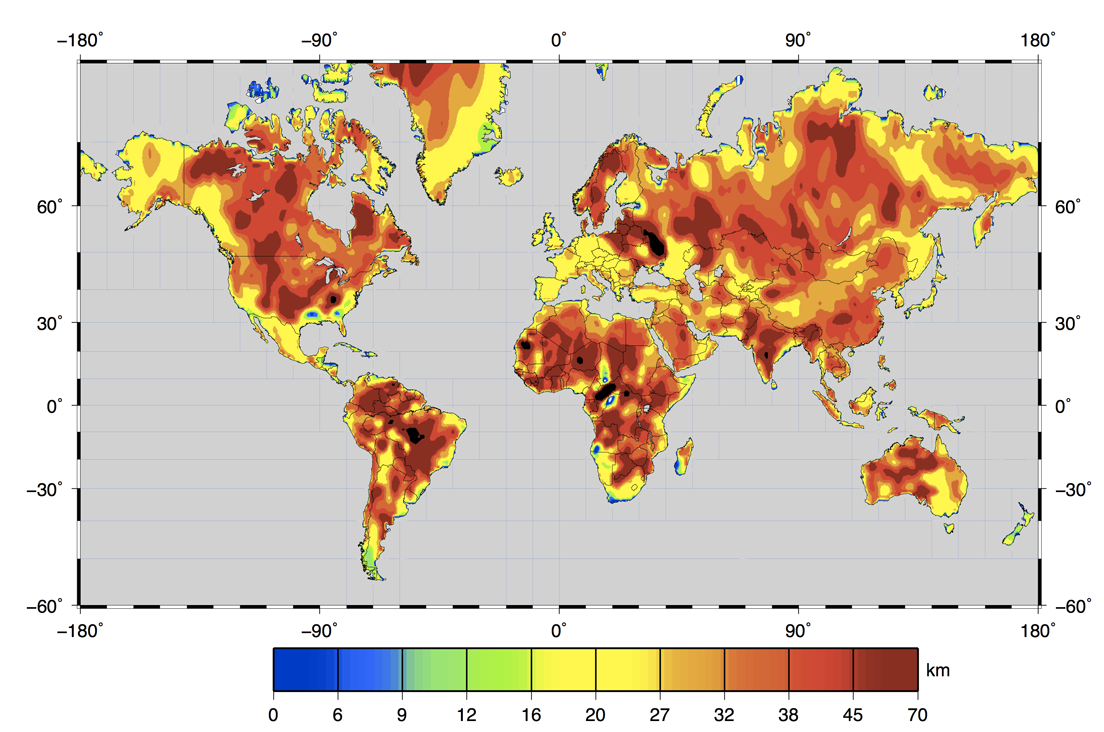Heat flux and magnetic crustal thickness updates based on latest satellite magnetic field model and Fox Maule et al. (2005) approach


Users of the above data set should cite the original Science paper by Fox Maule et al. (2005). The satellite magnetic field model used here is MF-7, based on CHAMP, and is available from geomag.org. Oceanic crust is masked on the magnetic thickness map because magnetizations are dominated by remanent magnetizations. Two other continental regions, Bangui in central Africa, and Kursk in the Ukraine, are also associated with strong remanent magnetizations and are examples of the failure of the assumption that magnetic susceptibility dominates over remanence.
Last updated on 29 Apr 2014


